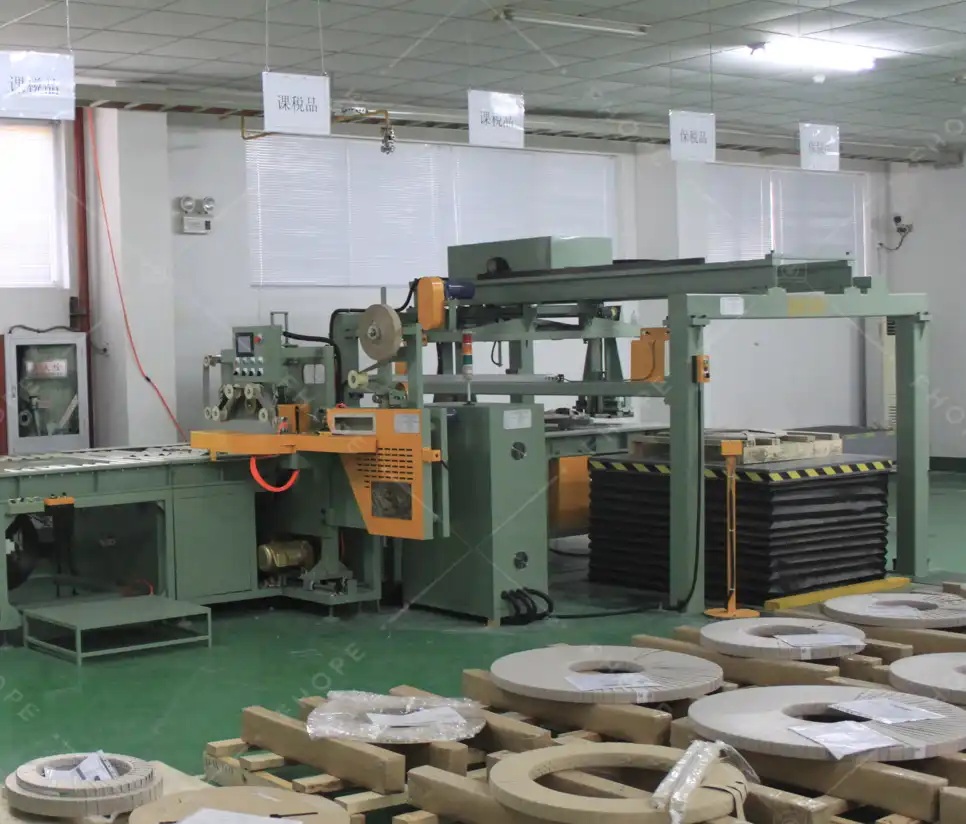Optimizing Coil Packaging Operations: How HMIs Simplify Processes and Reduce Costs
Coil processing and packaging operations face continuous pressure to enhance efficiency, control costs, and manage workforce challenges. Recruiting and retaining skilled operators remains a significant hurdle, particularly with high turnover rates impacting production consistency. In this demanding environment, Human-Machine Interfaces (HMIs) have emerged as a critical technology for streamlining operations and achieving significant cost savings.
Modern HMIs offer far more than basic control; they are sophisticated tools that empower operators, facilitate maintenance, and integrate seamlessly into the larger manufacturing ecosystem. Let's explore how strategically implemented HMIs can simplify tasks and lower operational expenditures in coil packaging.

1. Boosting Operational Efficiency
Effective HMIs provide operators with intuitive access to essential process data and command inputs. Key benefits include:
- Real-time Data Visualization: Clear graphical displays of machine status, production counts, and critical parameters allow operators to monitor the process at a glance.
- Streamlined Controls: Well-designed interfaces simplify complex operations, reducing the number of steps required to perform tasks or make adjustments.
- Faster Decision-Making: Easy access to relevant information empowers operators to make quicker, more informed decisions, optimizing throughput and minimizing minor stoppages.
2. Minimizing Costly Downtime
Unplanned downtime is a major cost driver in manufacturing. Smart HMIs incorporate features designed to proactively reduce equipment stoppages:
- Predictive Maintenance Alerts: Advanced HMIs can monitor the usage and condition of critical components (e.g., motors, bearings, sensors), alerting maintenance staff before a failure occurs. This shifts maintenance from reactive to proactive.
- Enhanced Diagnostics: When issues do arise, HMIs provide detailed diagnostic information and troubleshooting guides, helping maintenance personnel pinpoint and resolve problems faster.
- Integrated Parts Management: Some systems allow integration with inventory or procurement systems, simplifying the process of ordering replacement parts directly through the interface, reducing lead times. (For insights into the significant costs associated with downtime, explore resources from organizations.
3. Enhancing Workplace Safety
Safety is paramount in industrial environments. HMIs contribute significantly by:
- Clear Alarm Management: Prioritized alarms with clear descriptions and recommended actions help operators quickly identify and respond to potentially hazardous situations.
- Process Interlocks: HMIs enforce safety sequences and interlocks, preventing unsafe operations or machine states.
- Access Control: Role-based access ensures that only authorized personnel can modify critical parameters or operate machinery in specific modes.
4. Streamlining Operator Training and Onboarding

- Intuitive Design: Interfaces designed with user-centric principles are easier for new operators to learn and navigate, reducing training time and costs.
- Consistency: A standardized look and feel across different machines on a packaging line allows operators to transfer their skills more easily.
- Reduced Errors: Clearer interfaces and guided procedures minimize the potential for operator error, which can lead to downtime or material waste.
5. Key Characteristics of Effective Coil Packaging HMIs
While specific implementations vary, highly effective HMIs in the coil packaging sector often share common characteristics that maximize their value:
5.1. Intuitive User Interface (UI) and User Experience (UX)
The design should prioritize clarity and ease of use. This involves:
- Logical Navigation: Menus and screens should be organized in a way that reflects the workflow.
- Clear Visuals: Use of appropriate graphics, color-coding, and easy-to-read fonts.
- Responsive Feedback: The system should clearly indicate the results of operator actions.
- User Feedback Integration: Designing interfaces based on input from actual operators ensures the HMI meets real-world needs effectively.
5.2. Integrated Training and Support Resources
Modern HMIs can serve as valuable on-the-job training tools:
- On-Screen Documentation: Access to digital manuals, standard operating procedures (SOPs), and troubleshooting guides directly on the HMI screen.
- Video Tutorials: Embedding short videos for common tasks like setup, changeovers, cleaning, or basic troubleshooting.
- QR Code Integration: Linking via QR codes to online resources, videos, or support documentation for operators using mobile devices.
5.3. Standardization Across Equipment
For facilities with multiple machines, especially within an integrated automatic coil packing line, a standardized HMI approach offers significant advantages:
- Reduced Learning Curve: Operators familiar with one machine's HMI can quickly adapt to others.
- Increased Flexibility: Easier deployment of operators across different workstations.
- Simplified Maintenance: Maintenance staff interact with a consistent interface, speeding up diagnostics and repairs.
5.4. Seamless System Integration
HMIs act as crucial gateways for data exchange within a connected factory:
- PLC Communication: Robust communication with Programmable Logic Controllers (PLCs) is fundamental for machine control.
- ERP/MES Connectivity: Integration with Enterprise Resource Planning (ERP) or Manufacturing Execution Systems (MES) allows for seamless transfer of production orders, recipes, and performance data. This supports better planning, scheduling, and overall business intelligence. (Learn more about the benefits of such integration in the context of Industry 4.0).
- Database Logging: Storing critical process data and events for analysis, traceability, and quality control.

Conclusion
Investing in well-designed and strategically implemented Human-Machine Interfaces is crucial for modern coil packaging operations. By focusing on usability, integrated support, standardization, and seamless system integration, companies can leverage HMIs to significantly simplify operations, reduce costly downtime, enhance safety, and streamline operator training. Ultimately, effective HMIs are key enablers for achieving greater efficiency, lower operational costs, and sustained profitability in the competitive coil processing industry.